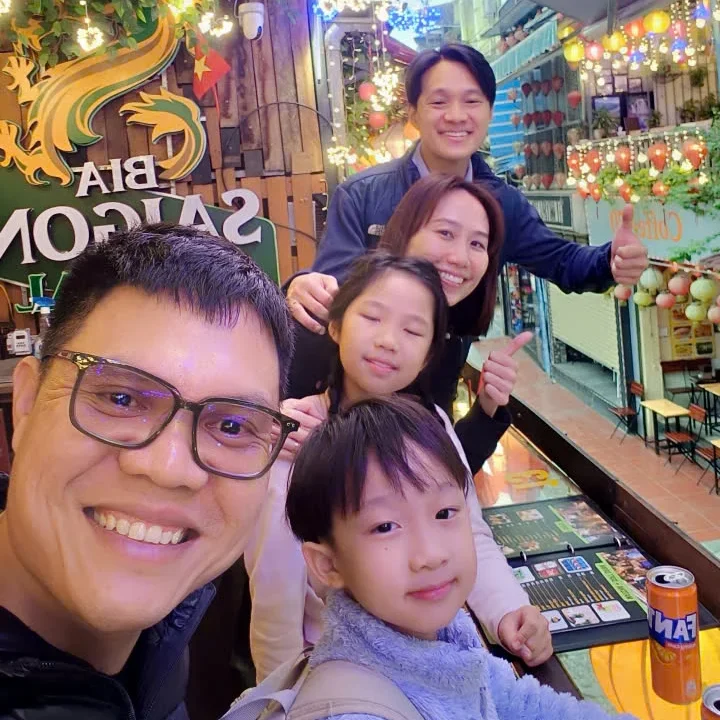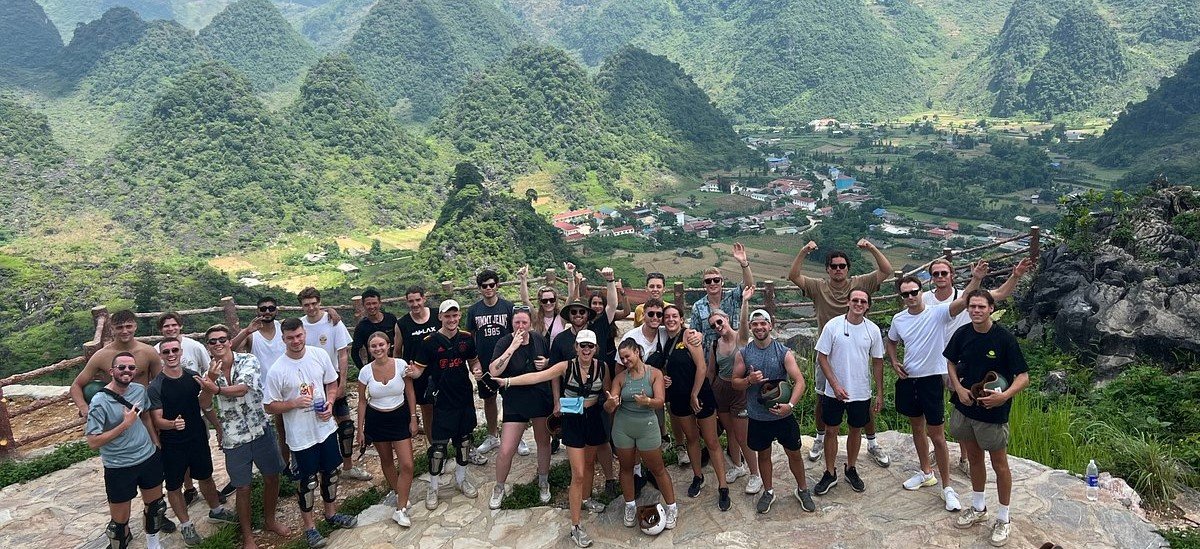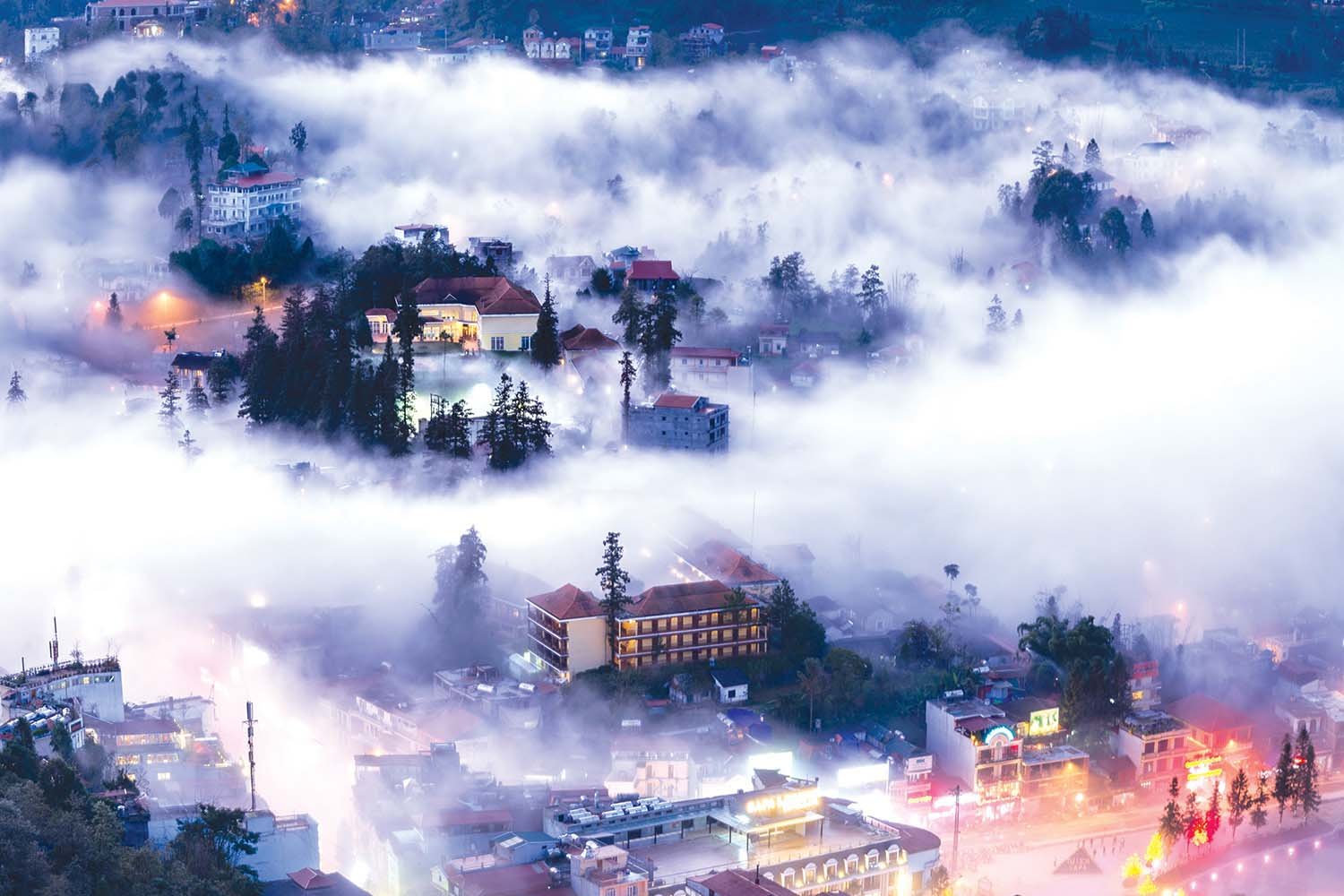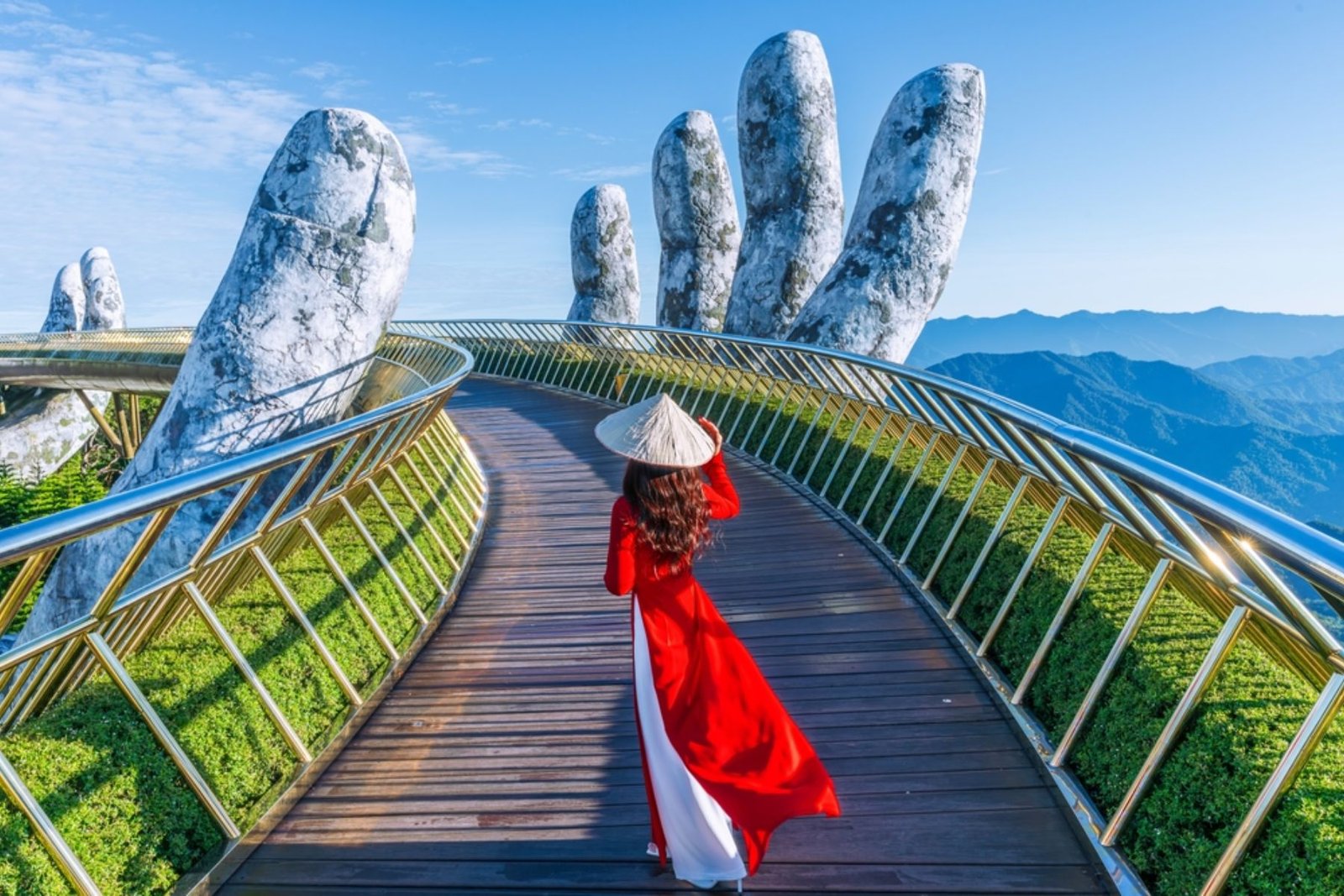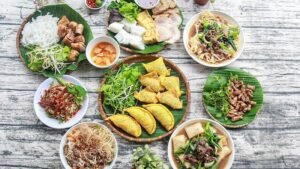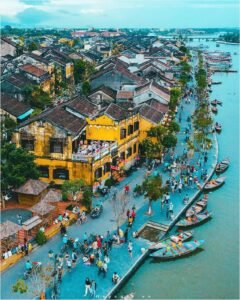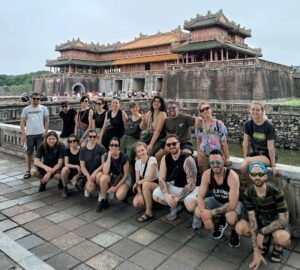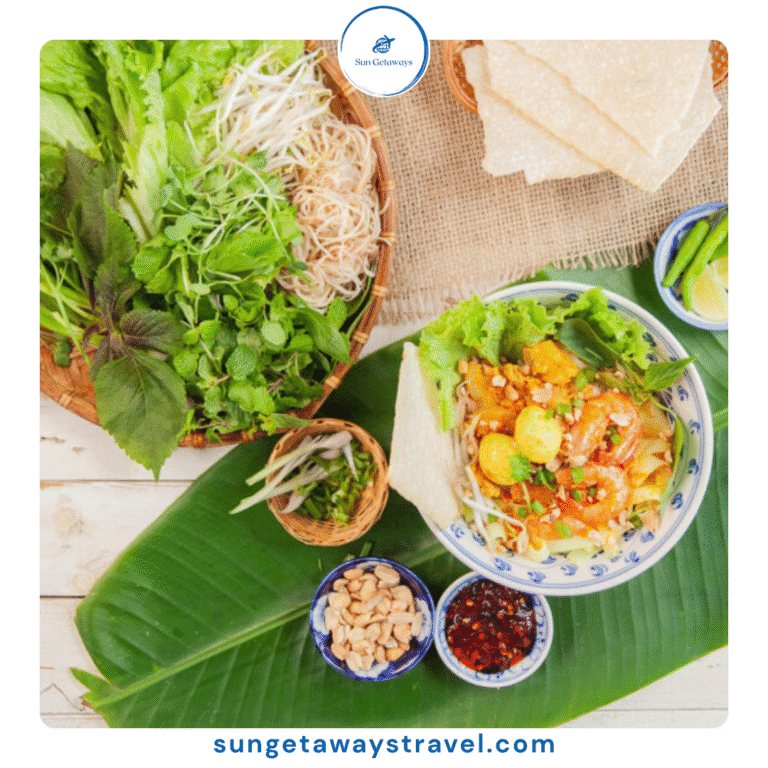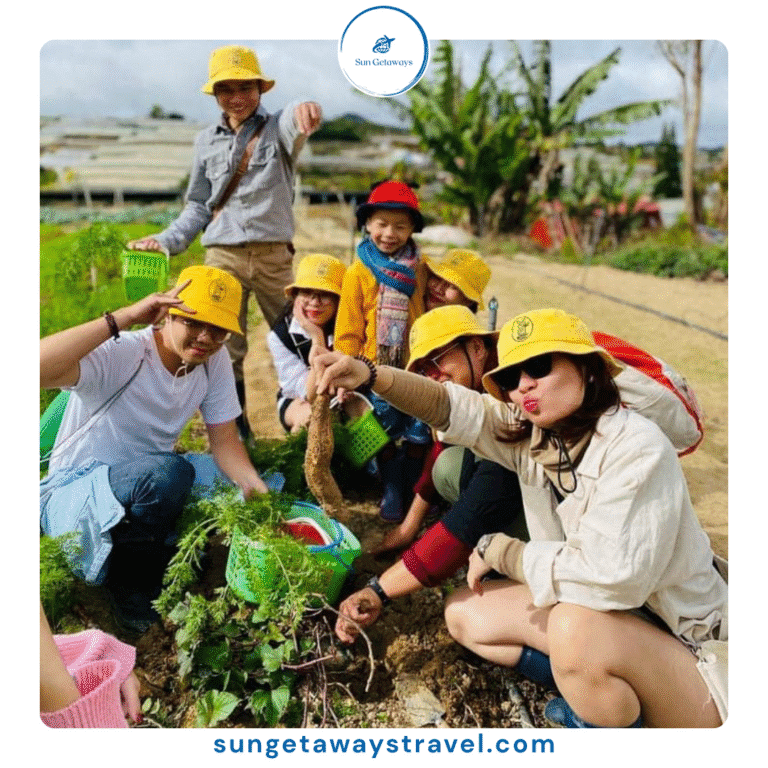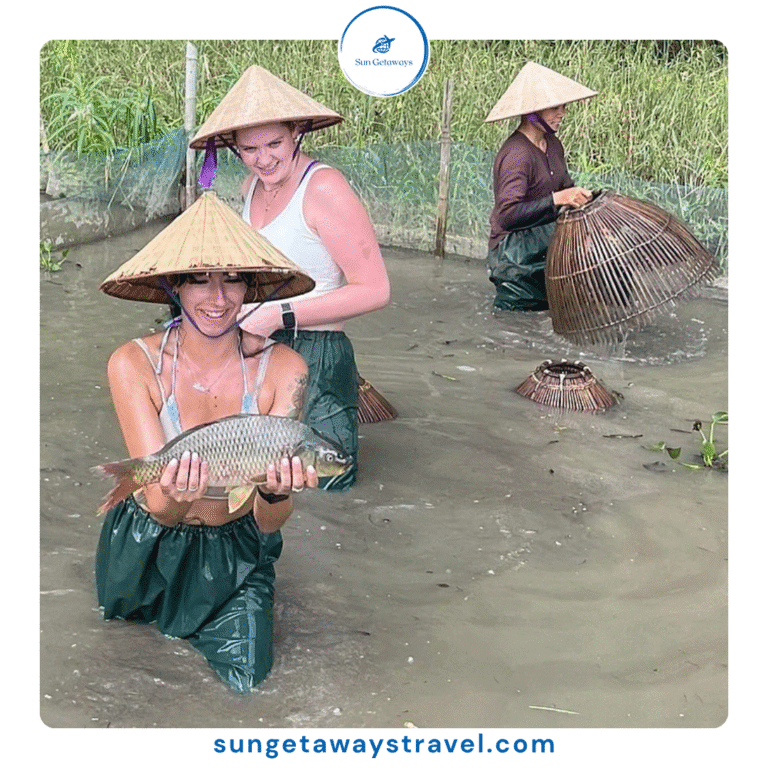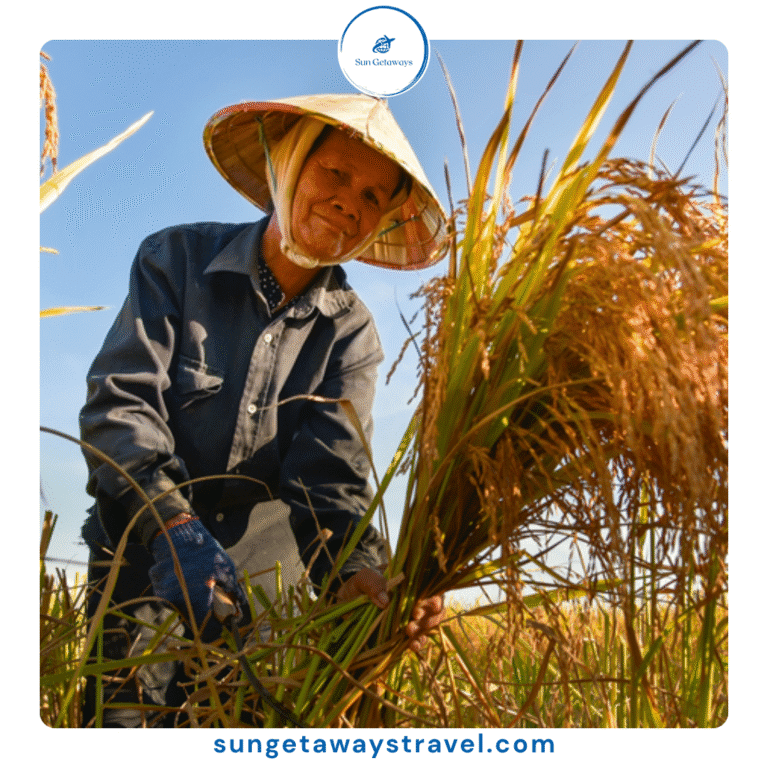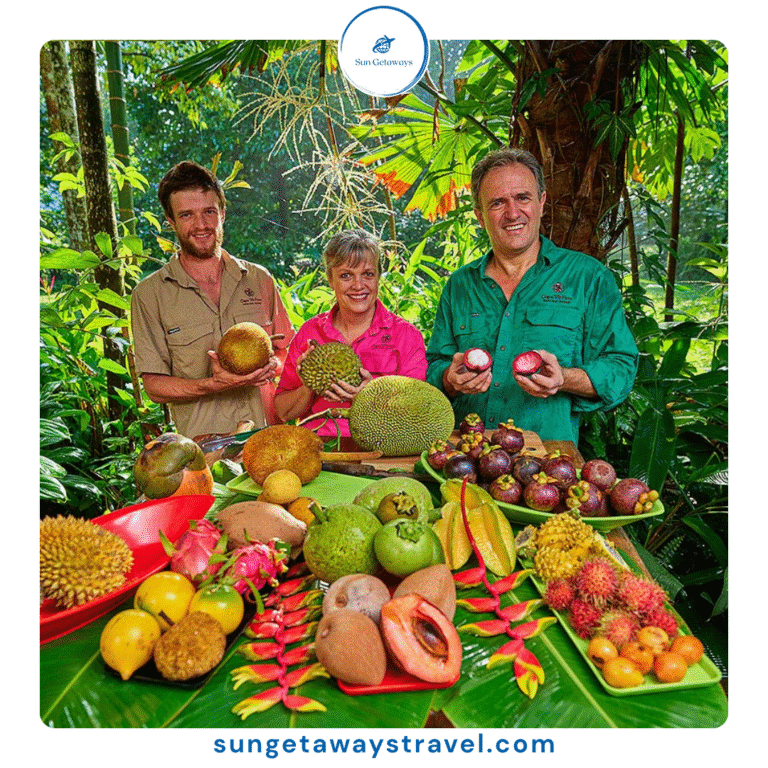Unveiling Vietnamese Culture: Traditions, Etiquette & Festivals for Travelers
 ngocdiem
ngocdiem Vietnam beckons travelers beyond postcards, inviting you to explore its Vietnamese culture through vibrant traditions, shared meals, and lively festivals. To truly connect with this captivating nation, understanding its intricate Vietnamese cultural etiquette and Vietnamese social norms is paramount. This guide equips you to navigate Vietnam with respect, immerse authentically, and create unforgettable memories.
1. Key Takeaways
- Respect Elders: Show deference to older individuals through greetings, gestures, and allowing them to lead.
- Embrace the Smile: A warm smile is a universal language in Vietnam and can smooth over many interactions.
- Dress Modestly in Sacred Spaces: Always cover your shoulders and knees when visiting temples, pagodas, or other religious sites.
- Learn Before You Go: Research local customs and specific festival traditions to enhance your experience and avoid misunderstandings.
| Dos | Don’ts |
| Greetings: Use both hands when shaking hands, especially with elders. Bow slightly. | Greetings: Don’t pat someone on the head, as it’s considered disrespectful. |
| Dining: Wait for elders to start eating first. Use chopsticks and spoons appropriately. | Dining: Don’t stick chopsticks upright in a bowl of rice – it resembles incense at a funeral. |
| Temples: Remove your shoes before entering. Dress modestly, covering shoulders and knees. | Temples: Don’t point your feet at altars or Buddha statues. Avoid loud conversations. |
| Festivals: Research specific festival etiquette. Dress respectfully, often in modest attire. | Festivals: Don’t disrupt ceremonies or act disrespectfully. Avoid excessive alcohol consumption. |
| Communication: Maintain a calm and polite tone. | Communication: Don’t raise your voice or show open anger. |
| Giving/Receiving: Use both hands when giving or receiving objects, especially money or gifts. | Giving/Receiving: Don’t use only one hand, as it can be seen as dismissive. |
| Bargaining: Be polite and smile. Start with a lower offer and negotiate respectfully. | Bargaining: Don’t be aggressive or rude when bargaining. |
2. General Etiquette & Social Norms in Vietnam
Understanding the foundational Vietnamese social norms is your first step toward meaningful interactions. Vietnamese society values harmony, respect, and indirect communication. These principles permeate daily life, from a simple greeting to complex family dynamics. The emphasis on community over individualism is a defining characteristic, shaping everything from how people interact in public to the subtle nuances of communication.
2.1. Greetings and Addressing People
Greetings in Vietnam are a blend of formality and warmth. A slight bow of the head, sometimes accompanied by a handshake, is common. When shaking hands, especially with elders, it’s customary to use both hands as a sign of respect, conveying deference and sincerity. This small gesture can make a significant positive impression. Learning a few basic Vietnamese phrases will undoubtedly earn you smiles and appreciation, showing that you’ve made an effort to connect with their culture. Consider practicing xin chào (hello), cảm ơn (thank you), and tạm biệt (goodbye) before your trip.
For a deeper dive into essential greetings and phrases, check out our guides:
- Essential Vietnamese Phrases for Travelers: A Quick Guide
- Say It Right: Common Vietnamese Greetings and Phrases
2.2. Body Language and Gestures
In Vietnam, body language is subtle but significant. A gentle smile is a universal icebreaker. Avoid pointing with a finger; use an open hand or nod. Never touch someone’s head—it’s sacred. Similarly, pointing feet at people or sacred objects is disrespectful. Public displays of affection (PDA) are generally frowned upon, especially by elders, though holding hands or a light arm touch between friends or couples is usually acceptable.
Explore traditions and customs in our guide to Vietnamese culture!
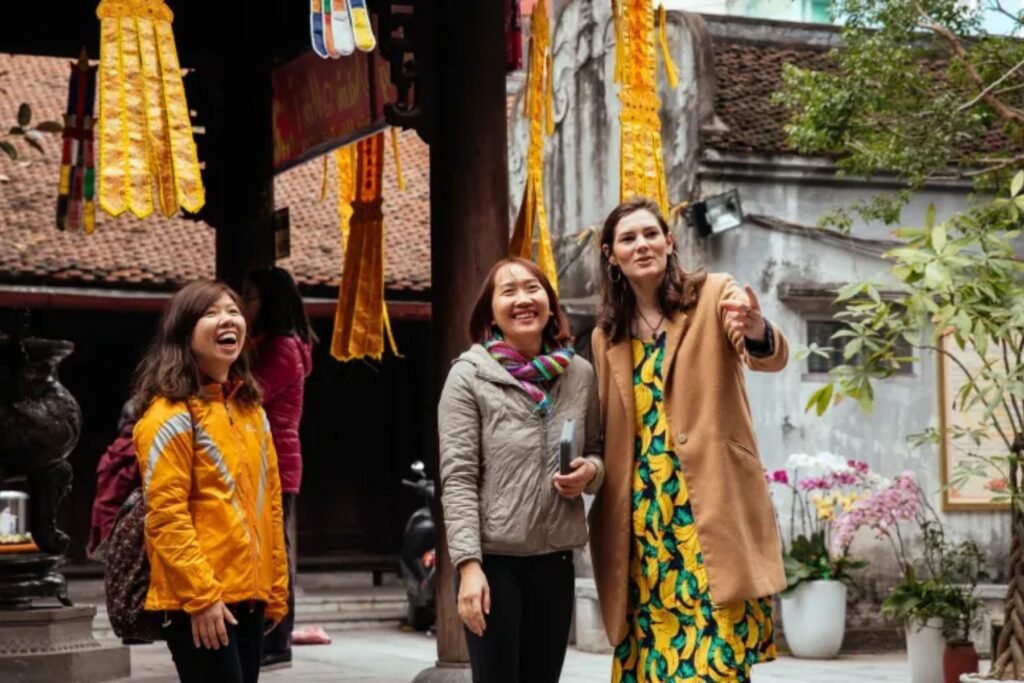

2.3. Public Behavior & PDA
Vietnamese society is generally conservative, especially outside major metropolitan areas. While younger generations may be more open, it’s best to err on the side of caution. Keep public displays of affection to a minimum. Overly loud conversations, boisterous laughter, or aggressive gestures are also considered impolite and can be seen as disruptive. Maintaining a calm, composed, and polite demeanor reflects respect for your surroundings and those around you. Remember that personal space might be smaller in crowded areas, so be prepared for close proximity.
2.4. Giving and Receiving
When giving or receiving anything, especially money, business cards, or gifts, it’s a strong sign of respect to use both hands. This gesture conveys sincerity, appreciation, and respect for the item and the person you’re interacting with. If someone offers you something, it’s polite to accept it, even if you don’t intend to consume or keep it. You can politely decline later if necessary, but initial acceptance shows graciousness. If you are offered a gift, it’s not customary to open it immediately in front of the giver unless prompted, as this can be seen as overly eager or even rude.
Discover the nuances of gift-giving in Vietnam:


3. Respecting Sacred Spaces: Temples, Pagodas & Shrines
Vietnam boasts a rich spiritual heritage, with Buddhist temples, Taoist pagodas, and ancestral shrines dotting the landscape. These are not merely tourist attractions but active places of worship and profound cultural significance for millions of Vietnamese people. Approaching these sites with reverence and understanding is fundamental to a respectful visit.
3.1. Dress Code
Modesty is key when visiting any sacred site. Always cover your shoulders and knees, regardless of the weather. This means no tank tops, short shorts, mini-skirts, or revealing attire. It’s advisable to wear loose-fitting clothing that doesn’t draw undue attention. Many temples in popular tourist areas, such as the Temple of Literature in Hanoi or the Linh Ung Pagoda in Da Nang, may offer wraps or sarongs for rent or loan at the entrance if you are not appropriately dressed, but it’s always best to come prepared to avoid any inconvenience.
For detailed information on dress codes and temple visits:
- Visiting Temples in Vietnam: What to Do and What to Avoid
- Vietnamese Clothing: From Ao Dai to Ethnic Minority Costumes
3.2. Proper Conduct
Before entering, remove your shoes. Often, you’ll see a designated area for footwear just inside the entrance. Maintain a quiet and respectful demeanor inside. Avoid loud conversations, boisterous laughter, or pointing your feet towards altars, Buddha statues, or anyone praying, as this is highly disrespectful. Walk slowly and deliberately, and be mindful of worshippers and monks who may be engaged in prayer or meditation. When approaching an altar, a slight bow is a gesture of respect. Avoid sitting on or leaning against sacred objects.
Learn more about appropriate behavior in sacred spaces:
3.3. Photography Guidelines
While photography is generally allowed in most temples, always be respectful and discreet. Avoid taking photos during active ceremonies or pointing your camera directly at worshippers or monks without their explicit permission. Be discreet, avoid using flash in dimly lit areas or directly at altars, and ensure your presence doesn’t disturb the solemn atmosphere. Some areas within temples may explicitly prohibit photography, so always look for signs.


4. Dining Etiquette: Savoring Vietnamese Flavors
Vietnamese cuisine is a global delight, a harmonious blend of flavors and textures. Sharing a meal is a cornerstone of Vietnamese culture, symbolizing connection, hospitality, and family. Understanding dining etiquette enhances the experience and demonstrates respect for your hosts and fellow diners.
4.1. Using Chopsticks & Spoons
Chopsticks are primary for solid food; hold them firmly but loosely. Rest them on the provided rest or across your bowl when not in use, and never stick them upright in rice (it’s considered a bad omen). Spoons are for soups and broths.
Master the art of dining with these guides:
- Vietnamese Dining Etiquette & Table Manners: A Guide for Visitors
- Vietnamese Table Manners: Traditions, Etiquette & Sharing
4.2. Sharing Dishes & Inviting
Vietnamese meals are communal, emphasizing togetherness. Hosts often offer food directly to guests; graciously accept these offerings. Don’t take the last piece from a shared dish unless offered. When dining with elders, wait for them to start and consider offering them food first. “Mời ăn!” is a common invitation.
Delve deeper into Vietnamese dining customs:
4.3. Paying the Bill
In restaurants, the bill is typically brought to your table upon request. It’s common for one person to pay for the entire group, especially if it’s a social outing or if you are being hosted. Among friends, there might be a friendly tussle over who pays, as generosity is highly valued. While splitting bills is becoming more common among younger generations in urban areas, it’s still generally considered polite for the host or the most senior person to settle the payment. If you wish to treat someone, gently but firmly insist.
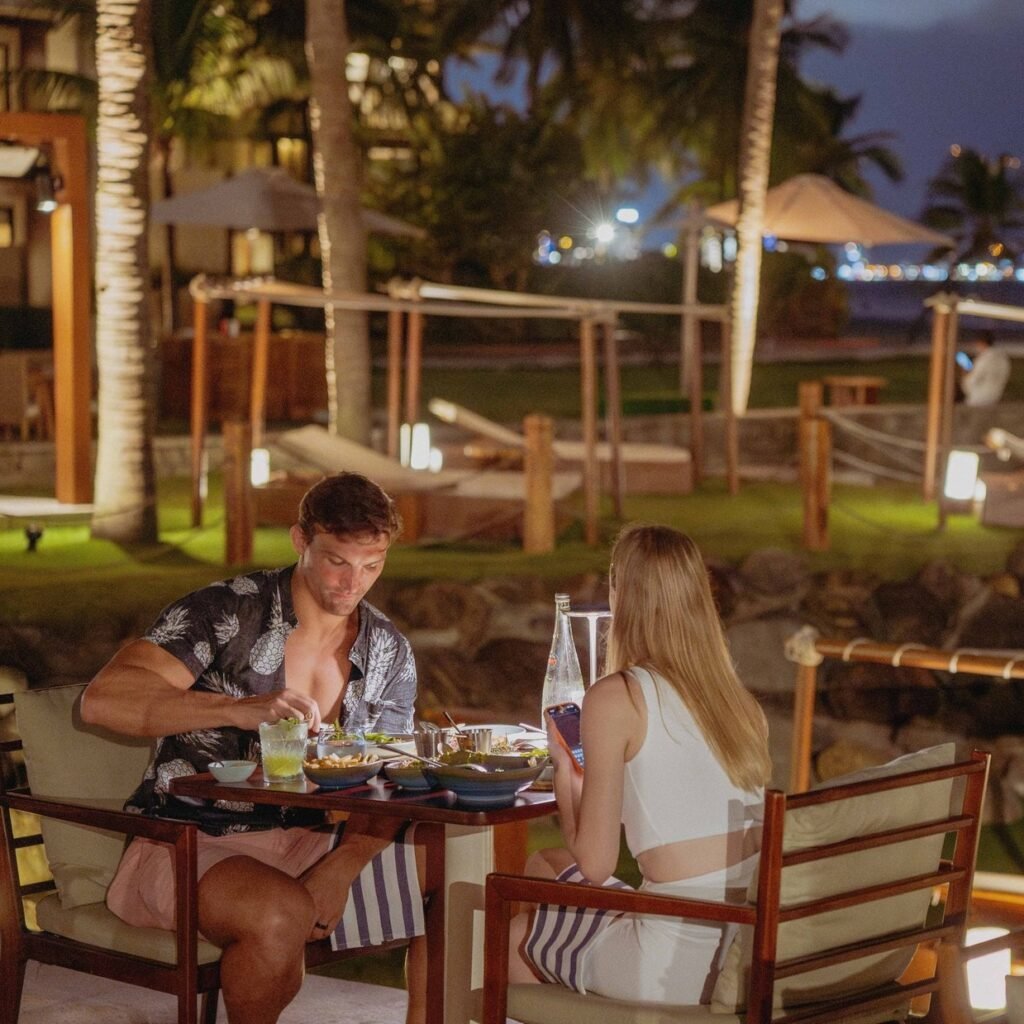

4.4. Tipping in Vietnam
Tipping is not a deeply ingrained practice in Vietnamese culture as it is in some Western countries, but it is increasingly appreciated in tourist-facing establishments such as high-end restaurants, hotels, and for tour guides or drivers. In local eateries or street food stalls, tipping is not expected. A small gratuity for good service, however, will always be well-received. For a comprehensive guide on when and how much to tip:
5. Understanding Family & Community Values
Family and community form the bedrock of Vietnamese culture, more so than in many individualistic societies. These values permeate every aspect of life, influencing social interactions, personal decisions, and the very fabric of society.
5.1. The Importance of Family & Elders
The family unit (gia đình) is central to Vietnamese society, encompassing extended relatives like grandparents, aunts, uncles, and cousins. Filial piety—deep respect for parents, elders, and ancestors—is a core virtue. Elders are revered; their advice is highly valued, and their well-being is paramount. When interacting with a Vietnamese family, show deference to the oldest members by greeting them first, using respectful language, and letting them lead. Ancestor worship is also a significant practice, reflecting the ongoing bond between the living and the deceased.
Explore the depth of Vietnamese family values:
- Vietnamese Family Values & Traditions: The Heart of Vietnamese Culture
- Understanding Vietnamese Family Structure: A Cultural Perspective
- Vietnamese Ancestor Worship: Daily Practices and Special Occasions
5.2. Community Spirit & Harmony
Beyond family, community (làng xóm) is vital in Vietnam. There’s a strong emphasis on harmony (hòa thuận), with a collective spirit seen in neighborly support and a preference for consensus over conflict. The concept of “face” (thể diện)—one’s reputation and dignity—is incredibly significant. Public criticism or causing someone to “lose face” is generally avoided, as it disrupts harmony. Thus, indirect communication is often used to preserve face for all involved.
Understand the nuances of community and “face”:
- Understanding the Vietnamese Concept of Face: The Delicate Balance
- Globalization and Vietnam: Balancing Tradition and Modernity
6. Navigating Markets & Shopping
Vietnamese markets are a sensory feast – bustling, colorful, and full of unique treasures. From the aroma of fresh produce to the vibrant hues of silks and handicrafts, they offer a captivating glimpse into daily life. Engaging with vendors is part of the experience, and understanding local customs makes it more enjoyable and respectful.
6.1. The Art of Bargaining
In traditional markets, bargaining for souvenirs, clothing, and certain goods is common and expected, seen as a friendly negotiation. Start at 50-70% of the asking price (or lower if inflated) and work up gradually. Always smile, be polite, and be ready to walk away; vendors often offer better deals. The key is to be respectful, not aggressive. Prices are usually fixed in modern malls and supermarkets.
Master the art of the deal:
6.2. Supporting Local Businesses
When shopping, prioritize local handicrafts, traditional silk products, lacquerware, ceramics, and other items made by Vietnamese artisans. This not only provides you with authentic and meaningful souvenirs but also directly supports local communities, preserves traditional crafts, and helps sustain the livelihoods of skilled craftspeople. Look for shops that visibly promote fair trade or directly source from local villages. Exploring markets like Dong Xuan Market in Hanoi, Ben Thanh Market in Ho Chi Minh City, or the Night Market in Hoi An offers prime opportunities to find unique local products.
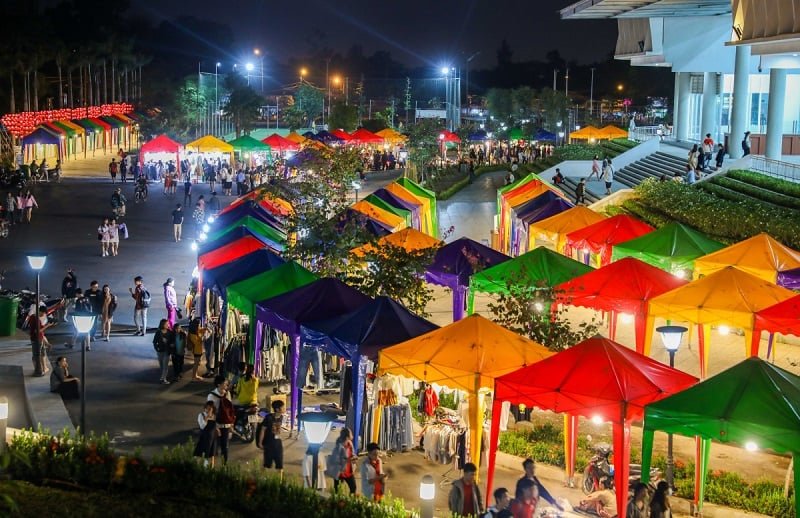

7. Traditional Vietnamese Festivals & Celebrations: A Cultural Calendar
Vietnamese festivals are vibrant expressions of the nation’s spiritual beliefs, historical reverence, and communal joy. From ancient rituals to lively modern spectacles, participating in or observing these celebrations offers an unparalleled window into Vietnamese culture and its enduring spirit. Each festival tells a story, steeped in history, folklore, and profound meaning.
7.1. Tet Nguyen Dan (Lunar New Year)
Tet Nguyen Dan, Vietnam’s Lunar New Year, is the most significant Vietnamese celebration. Occurring in late January or early February, it’s a profound time for family, ancestor honor, and new beginnings. Weeks before, the country buzzes with preparations: homes are cleaned and decorated with vibrant flowers, traditional foods like bánh chưng are prepared, and debts settled. Travelers experience a unique, festive atmosphere with joyous gatherings and firecrackers, though many businesses may close. Plan your travel logistics well in advance if visiting during this period.
Plan your Tet holiday experience:
- Things to Do During Tet Holiday in Vietnam
- Traveling in Vietnam During Tet Holiday: A Complete Guide for Foreigners
7.2. Hung Kings’ Temple Festival (Lễ hội Đền Hùng)
Held annually in April (10th day of the third lunar month), the Hung Kings’ Temple Festival honors Vietnam’s legendary founders. Millions of Vietnamese pilgrims gather in Phu Tho Province at the Hung Kings’ Temple Complex to pay respects. This national holiday showcases profound Vietnamese patriotism and a deep connection to ancestral roots, featuring solemn rituals, traditional folk games, cultural performances like xoan singing (a UNESCO heritage), and heartfelt offerings.
Learn more about this historic festival:
7.3. Hue Festival: A Celebration of Imperial Culture
Held biennially in the former imperial capital, the Hue Festival (April-June) is a grand, international celebration of Vietnam’s rich imperial heritage and cultural identity. Against the stunning backdrop of the Hue Citadel and Perfume River, it showcases traditional arts, music, dance, historical reenactments, royal court music (Nha Nhac), opera, and martial arts, creating a truly unique and immersive cultural spectacle.
Discover the magic of Hue Festival:
- Experience the Magic of Hue Festival: Things to Do and See
- Hue Festivals: A Celebration of Culture and Tradition
7.4. Hoi An Lantern Festival: A Magical Night
Every lunar month’s 14th day, Hoi An becomes a shimmering wonderland for its Lantern Festival. Electric lights are replaced by thousands of colorful silk lanterns, creating an ethereal glow along the Thu Bon River and old town. Visitors can release paper lanterns with wishes onto the water, making it a magical, romantic, and photogenic experience capturing Hoi An’s serene essence.
Immerse yourself in the glow of Hoi An:
7.5. Mid-Autumn Festival (Tet Trung Thu)
The Mid-Autumn Festival (September or October), often called the “Children’s Festival,” is a joyous Vietnamese celebration for all ages. It features lion dances, lantern parades with children’s illuminated creations, and the consumption of mooncakes (bánh trung thu). Families gather under the full moon, sharing treats and stories, appreciating the harvest, togetherness, and wishing for prosperity.
Explore the delights of Mid-Autumn Festival:
7.6. Other Notable Festivals
Vietnam’s calendar is rich with regional and national festivals, each offering a unique glimpse into local customs and beliefs. Some other noteworthy Vietnamese celebrations include:
- Da Nang International Fireworks Festival (DIFF): A spectacular international fireworks competition held annually in Da Nang (June-July) on the Han River.
- Lim Festival (Lễ hội Lim): A traditional folk festival in Bac Ninh Province (February) celebrating quan họ (love duet) singing, a UNESCO heritage, with boating and games.
- Elephant Race Festival (Lễ hội đua voi): A unique cultural event by the M’Nong ethnic group in Buon Ma Thuot, Dak Lak (March), featuring thrilling elephant races and Gong performances.
- Perfume Pagoda Festival (Lễ hội Chùa Hương): One of Vietnam’s longest and most important Buddhist festivals (February-April), where pilgrims journey to Perfume Pagoda in Hanoi.
- Giong Festival (Hội Gióng): Held in Soc Son District, Hanoi (April-May), commemorating the mythical hero Saint Giong with elaborate parades.
8. Tips for Experiencing Vietnamese Festivals as a Tourist
Experiencing a Vietnamese festival can be truly unforgettable. To make the most of it and show due respect:
- ➖ Research beforehand: Understand the festival’s significance and etiquette.
- ➖ Dress appropriately: Wear modest attire, covering shoulders and knees, especially for ceremonies.
- ➖ Book in advance: Secure accommodation and transport early due to crowds.
- ➖ Be respectful: Observe, ask permission for photos, and avoid disrupting rituals.
- ➖ Embrace the chaos: Festivals are vibrant and can be crowded; go with the flow.
- ➖ Stay hydrated and fed: Bring water and snacks, and sample local foods.


9. Common Misunderstandings & How to Handle Them
Even with the best intentions, cultural differences can sometimes lead to misunderstandings or awkward situations. Knowing how to recognize these potential pitfalls and navigate them gracefully is part of being a respectful and empathetic traveler in Vietnam.
9.1. Dealing with Persistent Vendors
In popular areas, you might encounter persistent vendors. Remember, it’s their livelihood. A firm but polite “không, cảm ơn” (no, thank you) with a smile usually suffices. If they persist, simply walk away. Avoid agitation or rudeness, as a simple, consistent refusal is most effective.
Refine your bargaining skills and vendor interactions:
9.2. Understanding “No”
Vietnamese communication prioritizes harmony and “saving face,” leading to indirect ways of saying “no.” Instead of a blunt refusal, you might hear “maybe later” (để xem), “it’s difficult” (khó lắm), or even silence. Learn to read non-verbal cues; reluctance often implies “no.” Don’t press for a direct refusal, as this can cause discomfort and make someone lose face. This indirectness is a key aspect of Vietnamese cultural etiquette for maintaining politeness and avoiding conflict.
👉For the best overview, refer to our article, Vietnam Regions & Top Cities: Your Ultimate Destination Guide
10. Frequently Asked Questions (FAQ)
Here are answers to some of the most common questions about Vietnamese culture and etiquette for travelers, addressing practical concerns and cultural nuances to help you prepare for your journey:
Is it rude to bargain in Vietnam?
No, it’s generally not rude to bargain in traditional markets and smaller, independent shops, especially for souvenirs, clothing, and handicrafts. It’s an expected part of the shopping experience and often seen as a friendly negotiation.
Can women wear shorts in Vietnam?
Yes, women can wear shorts in Vietnam, especially in casual settings, tourist areas, and cities. However, it’s highly recommended to wear longer shorts or pants that cover your knees and tops that cover your shoulders when visiting temples, pagodas, religious sites, ancestral shrines, government buildings, or more conservative rural areas.
Should I take off my shoes when entering a Vietnamese home?
Yes, it is customary to remove your shoes before entering a Vietnamese home. It is also standard practice when entering temples, pagodas, and sometimes even smaller shops or guesthouses. Look for shoes left outside the door as a clear cue. If in doubt, simply observe what others are doing or politely ask “Tôi có cần bỏ giày không?” (Do I need to take off my shoes?).
11. About the Author & Why Trust Us?
“Learning even a few basic Vietnamese phrases, like ‘hello’ (xin chào) or ‘thank you’ (cảm ơn), can unlock incredible connections. Locals truly appreciate the effort, often responding with genuine warmth and curiosity. And don’t shy away from joining a local festival or a simple street food gathering – these are where the heart of Vietnam truly beats. It’s about stepping outside your comfort zone and embracing the warmth of Vietnamese hospitality, allowing for truly authentic encounters.”
— Ms. Ngoc Diem, Senior Tour Designer at Sun Getaways Travel
At Sun Getaways Travel, we’re your partners in discovering Vietnam’s true essence. Our team of seasoned travel and cultural specialists, including Senior Tour Designer Ms. Ngoc Diem, meticulously crafts authentic, respectful, and expert-led tours. We prioritize genuine cultural experiences, like homestays and cooking classes, ensuring positive interactions with local communities. Our comprehensive guides, like this one, offer accurate, up-to-date insights on etiquette and festivals.
We believe true travel is about understanding and connecting, guiding you on a journey that’s deeply felt and remembered.
12. Conclusion
Embarking on a journey to Vietnam is an invitation to immerse yourself in a culture as vibrant as its landscapes. By understanding and respecting Vietnamese traditions, practicing mindful etiquette, and embracing the spirit of its lively festivals, you’ll not only have an authentic adventure but also forge genuine connections that transcend language barriers. This journey of cultural discovery promises to be as enriching as the destination itself, leaving you with a deeper appreciation for this resilient and beautiful nation.
Ready for a truly authentic journey? Explore our cultural immersion tours designed to connect you deeply with Vietnamese traditions and festivals, allowing you to experience local life firsthand. Contact our specialists for personalized advice and start planning your unforgettable cultural adventure today!
Ask a question
Leave a Comment (0)
No questions yet. Be the first to ask a question!

